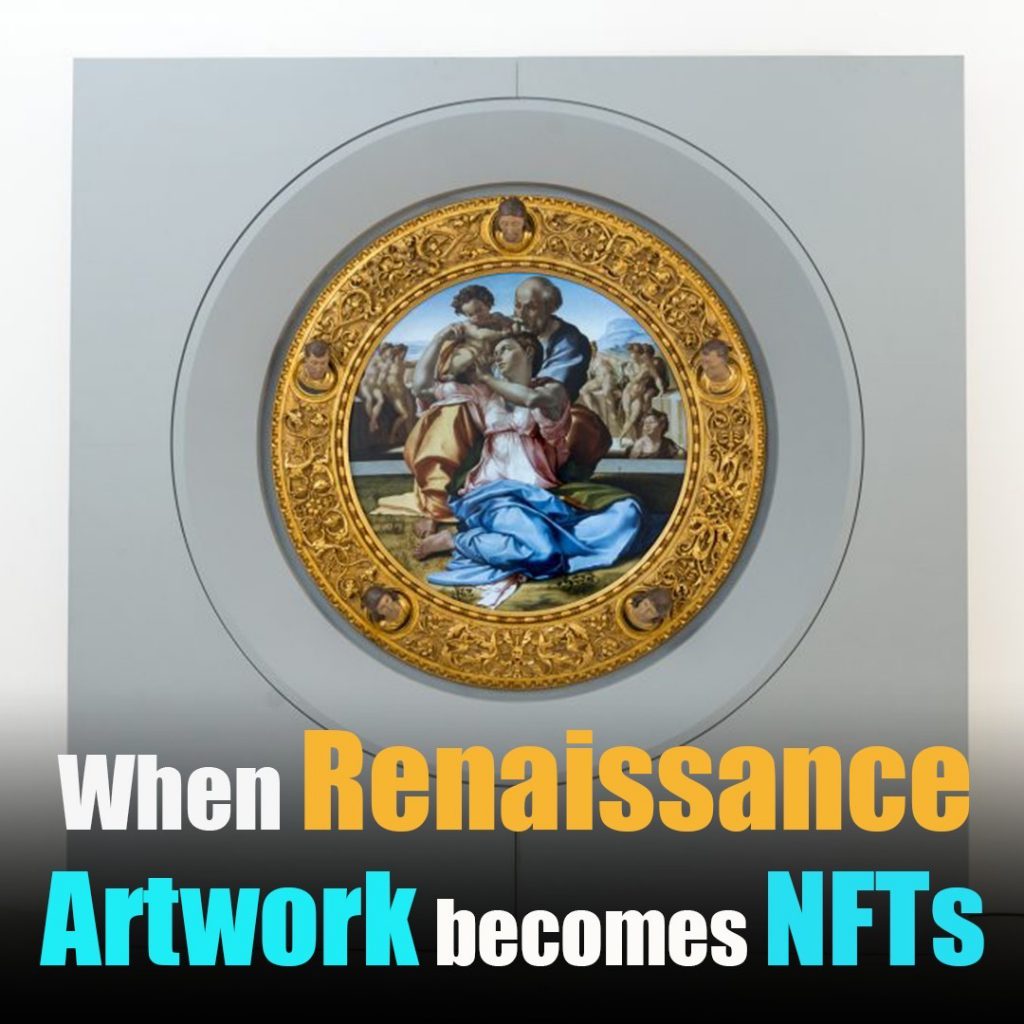Last year, in order to recoup the losses caused from the pandemic, the Uffizi Galleries, one of the biggest galleries in Italy, offered Renaissance masterpieces as NFTs. Based on an Italian report, an Italian woman spent US$170,000 on Michelangelo’s painting — Doni Tondo(1505-1506), as a birthday gift for her husband.
The Uffizi Galleries shared the proceeds with Cinello, an Italian company offering digital copies of masterpieces as NFTs. The company called the visual artworks as DAWS. All DAWS were generated in the dimensions of the actual piece. The DAWS was also accompanied by a NFT token and certificate of authenticity signed by the museum. These actions were made to intensify the rarity as well as the difficulties of duplication.
Besides the mentioned artwork, Caravaggio’s “Bacchus”, Botticelli’s “The Birth of Venus”, Titian’s “Venus of Urbino”, and Raphael’s “Madonna del Granduca” were also part of the collection. The combination of classical art and modern technology not only enables the operation of museums, but also proves the diversification and liberalization of art forms. It activates the art ecology and expands the art market. It was recently announced that the Uffizi Galleries has teamed up with 3 other galleries and will sell more masterpieces in an upcoming exhibit in London.


